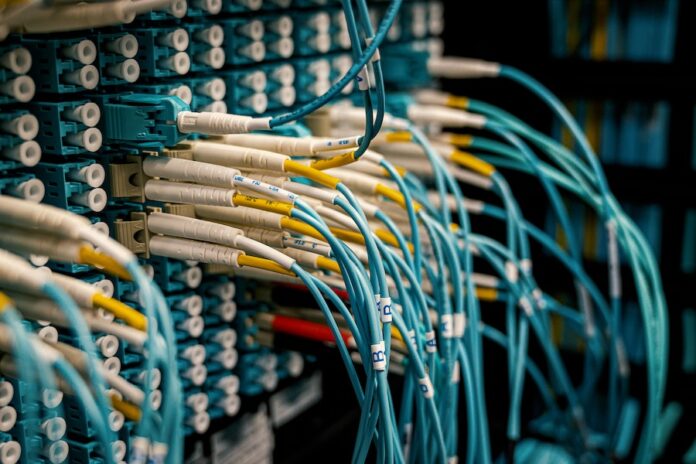Fiber optics are thin strands of glass or plastic that transmit light through total internal reflection properties. They’re most commonly used to send data as light signals in optic cables, but you can also use them for illumination and other applications.
Cable providers use fiber optics to provide video, internet, and other services because it is a cheap and reliable way. Fiber optic technology transmits information with lasers instead of copper wires, which offers many more benefits than traditional copper cables.
1. Transmitting Data
Fiber optic cables are the backbone of the internet and are used to transmit voice and data. Fiber optic cables can transmit analog and digital signals, are very reliable, and can go long distances with few issues.
The data is transmitted as pulses of light through the fiber optic cable, which is cheaper and more efficient than transmitting data with electricity. Although they’re commonly used to transfer data, you can also use fiber optic cables to transmit audio signals.
Fiber optic cables are also used in telephone systems, especially trunk lines. They are also used to transfer images, as in fiber optic cameras.
2. Networking
You can use fiber optic cables for local, wide-area, and fiber-optic interoffice networks. LANs use fiber optic cables to transmit data between computers and servers in a building. WANs are used to connect LANs in different locations.
FIO interoffice networks are used to connect offices in the same building. Other types of fiber optic cables are used for different kinds of networks.
These types include multimode, single mode, and tight-buffered fiber optic cables. You can also find fiber optic cables designed for different environments, like ruggedized fiber optic cables designed for harsh environments.
3. Remote Communication
Fiber optic cables can transmit light between two points, allowing for long-distance communication. This is often done using a laser to send information over fiber optic cables thousands of miles away. This technology is often used for communication between two places with no physical connection.
Remote communication with fiber optics has many advantages over traditional forms of communication, such as radio waves or satellite communication.
Laser communication over fiber optic cables is much faster than radio waves and can be transmitted between two points without a physical connection. You can opt for the best internet provider for rural areas for a reliable, fast, and efficient internet connection.
4. Optical Detection
Fiber optic sensors use light to detect things, such as changes in temperature, movement, or radiation. When light passes through a substance, it is either absorbed or reflected.
Different materials have different absorption and reflection properties, so you can use them to detect the substance.
For example, an air quality sensor uses an air filter with an optical fiber to detect air quality. The air filter absorbs certain gases like smoke, which changes how light passes through it. This change can be detected using optical fiber.
5. Light Therapy and Phototherapy
Fiber optic therapy is a type of phototherapy that uses light to treat medical conditions, including sleep disorders, seasonal affective disorder (SAD), and skin conditions. The exact type of light used for these treatments will vary depending on the condition being treated.
Fiber optic therapy uses fiber optic blankets or panels that emit light. Fiber optic blankets or panels are made from fiber optic cables woven into fabric. The blankets or panels are designed to distribute light evenly throughout the entire blanket or panel.
6. Illuminations and Decorations
Fiber optic cables can be used as illuminations and decorations. They are commonly found as decorations on Christmas trees and decorations. Fibers are often used to create decorative patterns, such as Chinese paper lanterns and woven fabric.
Fiber optic cables are often used in artistic projects. Artists can use fiber optic cables to create different patterns and images. They can also be used as a light source for artwork or as a light inside of a structure, such as a lamp.
Conclusion
Fiber optics are an extremely useful technology that has many uses. You can use them to transmit data, allow for remote communication, detect atmospheric conditions, and much more. The uses of fiber optics mentioned above are only a small portion of what they can do. Fiber optics will become even more useful and important as technology grows.






















